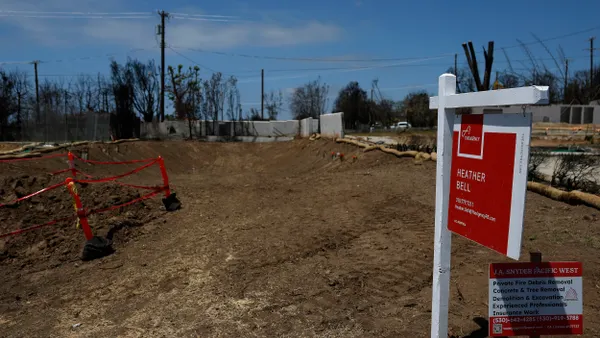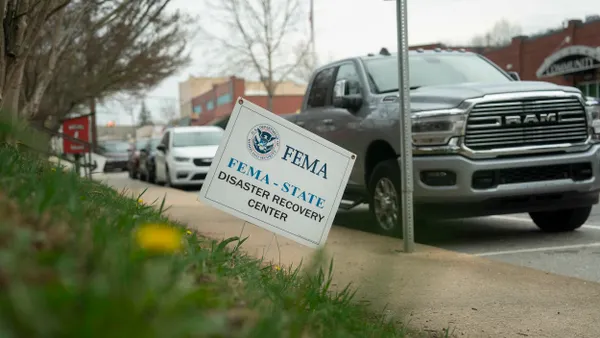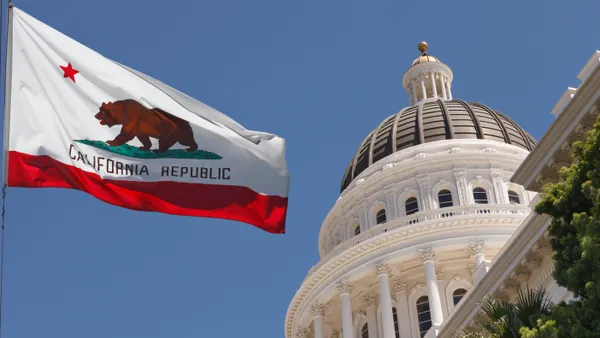While the concept of a smart city is not brand new, the industry certainly has experienced rapid growth in the past few years. Leaders have developed a greater focus on sustainability and integrating technology and data into their cities' operations, and more attention is paid to cities' advances in this space.
The evolution is reflected not only in the amount of smart city buzz in the media, but also in the number of smart city-focused conferences popping up to bring together private and public workers who want to further expand the industry.
This year, cities welcomed new technologies and concepts, but they also took existing concepts to new levels. Smart Cities Dive has compiled its list of the top trends that significantly shaped the smart city space in 2017.
1. Ride-sharing services' growing influence
Uber revolutionized the way people travel when it launched in San Francisco in 2011, with Lyft following suit the next year. The companies spent the next several years advancing their business models, the services they offered and the markets in which they operate. In a short time, ride-sharing has become a pervasive and preferred mobility option — especially in urban areas — much to the ire of taxi companies and transit authorities. But in 2017, some things changed to make it the year of ride-sharing's influence.
First, a number of new ride-sharing businesses exploded onto the scene and existing providers significantly ramped up service, creating competition for the big two. Such a rapid influx of competition also created pricing pressure on the market, which has been a win for customers.
This was also the year when many municipalities and transit authorities overcame their animosity for ride-sharing services and instead tried partnering with them. In a classic display of "if you can't beat 'em, join 'em" mentality, transit agencies clearly realized that the on-demand services are here to stay and are not a passing fad. With transit ridership slipping in many parts of the country, some agencies concluded that fighting ride-sharing is a losing battle, but partnerships could increase citizens' mobility and use of transit systems. Examples include Phoenix partnering with Lyft for first mile, last mile ride-sharing trips to and from bus stops, and Via's partnership with cities including Arlington, TX and West Sacramento, CA for on-demand public transit.
2. Dockless bike-sharing
Traditional bike-sharing has spread quickly since its introduction to the United States in 2010, when Washington, DC was the first city to move beyond a pilot and have a fully-functioning system. That city also was one of the first to get the attention of the numerous dockless bike-share providers that entered the U.S. market this year. Currently most of the cities that have adopted the dockless model are still piloting the concept, so next year should give more clarity on how sustainable and scalable the dockless systems are in U.S. cities.
3. Deliberate development
This year brought to light more cities that are looking at the "big picture" and drawing up entire plans to efficiently and effectively implement smart city technologies and concepts, rather than taking them on in a disjointed, piecemeal fashion.
Washington, DC's Chief Technology Officer Archana Vemulapalli explained that her city follows a greater implementation plan that balances technology, sustainability, transparency and equity because if cities "implement technology for technology’s sake or because it gives you a cool new result," that doesn't benefit residents or use taxpayer dollars wisely.
Also this year, Seattle hired its first smart city coordinator to encourage collaboration among the city's departments and to manage the smart city policies and partnerships, and Philadelphia began an ongoing initiative to devise the smart city roadmap that will guide its evolution. These cities' efforts and others reflect that deliberate development is the future for successful smart project implementation.
4. P3s and municipal collaborations
This year cities unveiled more projects than ever on which they collaborated with another entity. As previously mentioned with ride-sharing, the transportation sector in particular has experienced a lot of recent growth in using public-private partnerships (P3s). But partnerships aren't only forming between public and private entities; municipalities increasingly are partnering with each other to take on big projects. This fall, 16 Boston suburbs banded together to form their own bike-sharing system, as did three cities in California. P3s and municipal collaborations alike allow cities to accomplish goals and launch initiatives that might be too risky, cost prohibitive or not scalable enough for an individual community to attempt on its own.
5. Local-level dependence
Many cities already had begun work on local plans addressing a national or global issue, and this year more municipalities went that route than relying on support from the federal government. Cities and states increasingly penned frameworks for wide-reaching issues on which they disagreed with or anticipated little assistance from the new administration, such as climate change, refugees and net neutrality. Some collaborated with other cities or states to form like-minded groups — such as the one opposing net neutrality — while other communities simply plugged away alone on devising their plans for combating climate change through commitments to use 100% renewable energy.
6. Affordable housing plans
The cost of housing is rapidly and dramatically outpacing wage growth, and in 2017, local leaders across the country took a stand and became more vocal about the problem. The high cost of living traditionally had been viewed as a big city problem or one that plagues tech-focused areas such as San Francisco or Seattle. But it has become obvious that the problem is not limited to large cities, considering that medium-sized cities such as Nashville and Salt Lake City are experiencing issues with dwindling affordable housing inventory due to ballooning populations. Boston and Seattle are among the cities introducing or expanding comprehensive plans to increase affordable housing inventories — especially for families — while Baltimore and Chicago are taking a classic approach with $1 property sale programs.
Going hand-in-hand with affordable housing programs are homelessness mitigation programs, which also were pushed into the spotlight this year. San Jose, CA and Austin, TX are among the communities that announced programs to address homelessness. Cities also are more focused now on employing holistic programs that get to the root causes of homelessness and center on long-term housing and re-integration into society, as opposed to simply viewing a homeless shelter as the best or only solution.
7. Building smart cities from scratch
Smart cities typically grow out of existing cities that have decided to modernize. But this year some high-profile entrepreneurs with lofty goals promised to build smart cities from scratch. Saudi Arabia's Crown Prince Mohammed bin Salman announced a $500 billion plan to build a 10,000-square-mile megacity that would be technology driven and operated completely on renewable energy. Similarly, Bill Gates' investment group bought a 24,800-acre plot of land outside of Phoenix on which to build a smart city.
Other plans like these are in the works, but so far the concept is in its infancy and untested. If these plans do end up coming to fruition, it will be years before conclusions can be drawn about the viability of these new from-scratch smart cities compared with well-established, well-functioning communities that implement smart concepts.










